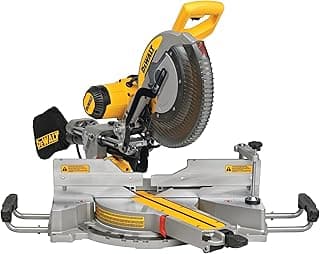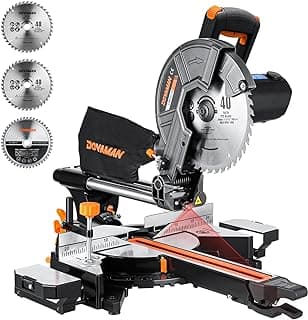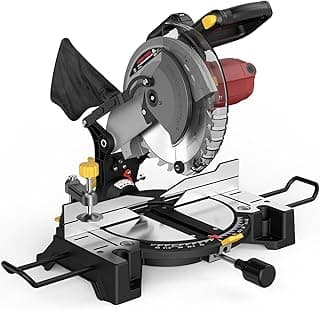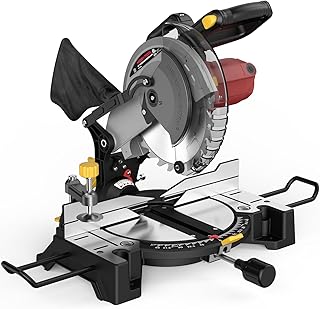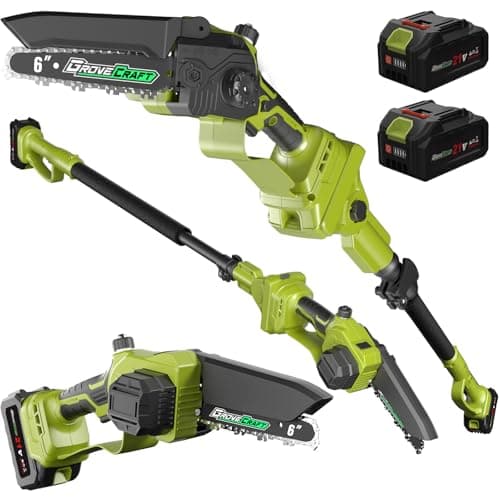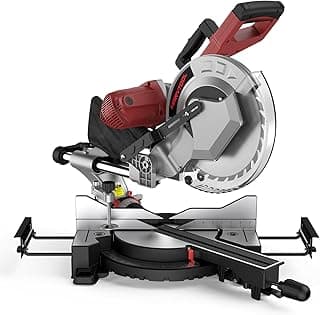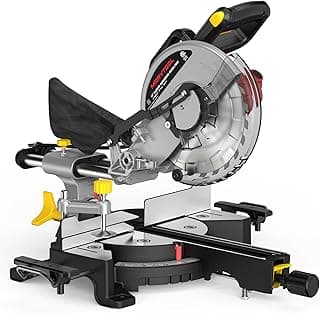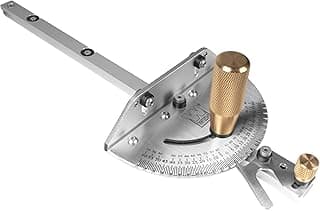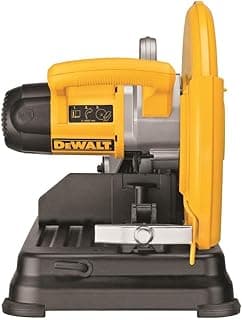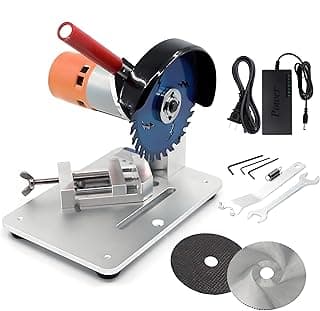When it comes to precision woodworking, nothing beats the best miter chop saw. It delivers clean, accurate angled cuts that every craftsman values. But here’s the thing—choosing the right model isn’t easy. You need to consider blade size, cutting capacity, and versatility. Ready to find out what separates a good saw from a great one? Keep reading.
If you’re working on larger materials, you might also explore the best sliding chop saw, which offers extended cutting reach. For smaller or more detailed tasks, the best mini chop saw can be a compact yet powerful option. And if you’re just starting your research, checking out the best chop saw overall will give you a solid baseline. Let’s dive in and uncover which model truly stands out.
Top Picks
Best Precision Cuts: DEWALT 20V MAX 7-1/4-Inch Miter Saw, Tool Only
The DEWALT miter saw stands out for its remarkable precision and user-friendly design. Its integrated cut line positioning system provides clear, adjustment-free visibility, allowing users to align cuts with confidence. The adjustable stainless-steel miter detent plate, featuring 11 positive stops, enhances both productivity and accuracy during repetitive tasks. Weighing only 30 pounds, this model is compact and easy to carry between job sites or store in limited spaces. The oversized bevel scale and cam lock miter handle make angle adjustments smooth and fast, which is particularly useful for users who frequently shift between bevel and miter cuts.
From a buyer’s perspective, the saw’s performance justifies its professional-grade reputation. Customers often highlight its solid construction, minimal vibration, and consistent accuracy even after extended use. While some users note the cutting capacity is more suited for small to mid-sized projects, most agree that its precision, portability, and reliability make it a dependable choice for both workshop and on-site applications.
Best Bevel Flexibility: DEWALT 12-Inch Miter Saw, 15-Amp, Single Bevel
The DEWALT 12-inch corded miter saw delivers professional-grade performance with a focus on accuracy and stability. Its stainless-steel miter detent plate includes 14 positive stops, ensuring repeatable and precise cuts every time. The tall sliding fence supports up to 5-1/2-inch base molding vertically, offering solid backing for crown and trim work. With bevel capabilities ranging from 0 to 48 degrees to the left and up to 3 degrees to the right, it provides exceptional flexibility for complex angle cuts. The machined base fence support further enhances rigidity, minimizing deflection during demanding cuts.
From a user standpoint, this saw earns praise for its consistent accuracy, clean cutting performance, and robust construction. Professionals appreciate its reliability across long work sessions, while DIY users find it intuitive once set up. However, a few note that its weight makes it less convenient for frequent transport. Overall, it’s a durable, high-precision miter saw built to handle detailed woodworking with confidence and control.
Best Heavy-Duty Performance: DEWALT Double Bevel Sliding Miter Saw, 12-inch
The DEWALT corded miter saw is built for demanding jobs that require both power and precision. Equipped with a 15-amp, 3,800 RPM motor, it handles tough materials effortlessly while maintaining consistent performance. The integrated cutline blade positioning system eliminates the need for manual alignment, ensuring every cut is precise and visible. Its tall sliding fences accommodate crown molding up to 7-1/2 inches and base molding up to 6-3/4 inches, providing versatility for trim and framing work. The saw’s design allows clean cuts through 2x14 lumber at 90 degrees and 2x10 at 45 degrees, meeting the needs of professional carpenters and contractors.
Users often commend its powerful motor and exceptional accuracy across multiple cut types. The dust collection system stands out, capturing over 75% of debris and keeping the workspace cleaner than most competitors. While some mention its bulkiness makes it less portable, most agree that its stability, precision, and cutting capacity make it a reliable workhorse for workshop and site applications alike.
FAQs
Is a miter saw better than a chop saw?
It depends on your needs. A miter saw is designed for making angled and beveled cuts, ideal for trim work, molding, and framing. It allows you to pivot the blade for compound cuts, giving you precise control over angles.
A chop saw, on the other hand, is primarily used for straight 90-degree cuts through metal or heavy materials. It’s more powerful but less flexible. If your projects involve wood and require accuracy in angles, a miter saw is generally the better choice. For tough materials like steel or rebar, the chop saw wins in durability and strength.
Which is better, a 10 or 12 sliding miter saw?
Both have their strengths. A 10-inch sliding miter saw is lighter, more affordable, and easier to control—perfect for DIYers or small workshops. It usually handles boards up to about 6 inches wide.
A 12-inch sliding miter saw offers a larger cutting capacity and greater power, making it ideal for professionals handling thick lumber or larger trim. The downside is its extra weight and higher cost.
In short: choose a 10-inch model for portability and precision, or a 12-inch saw for high-volume, heavy-duty work.
What is the best saw for cutting miter joints?
The best tool for cutting miter joints is a compound miter saw. It allows you to adjust both the miter (horizontal angle) and bevel (vertical tilt), letting you create perfect joints for corners, frames, and moldings.
A sliding compound miter saw goes one step further—it extends the blade’s reach, enabling wider cuts without sacrificing accuracy. For woodworking that demands tight-fitting joints, this type of saw offers superior precision and repeatability.
What should you never cut with a miter saw?
Never use a miter saw to cut metal pipes, masonry, or materials like PVC that can melt or shatter. These can damage the blade, overheat the motor, or cause dangerous kickback.
Always check the blade type—wood blades are designed for clean cuts on lumber and trim, not metal or tile. If you need to cut metal, use a chop saw or a saw specifically rated for that material. Safety should always come first.
Final Thoughts
The best miter chop saw combines precision, efficiency, and durability—key traits that every woodworker or contractor relies on. Whether you’re framing, trimming, or crafting detailed joinery, the right saw can make all the difference in your results. Understanding the differences between miter and chop saws, choosing the right blade size, and knowing safe usage practices ensures you get consistent, professional-grade cuts every time.



